SIDE BY SIDE is a new documentary examining the rise of digital technology, and its impact upon traditional film and those making the films we know and love. Guided by Keanu Reeves, numerous faces of the film industry offer their opinions during SIDE BY SIDE on an issue affecting all those who visit cinemas worldwide, in addition to those active within the industry.
The film will be given a UK release on February 15th, when Cambridge 105FM’s Bums On Seats programme will join forces with TAKE ONE to lead a discussion on the issues the film raises. Toby Miller of Cambridge 105FM will lead the discussion with Jim Ross, Sarah McIntosh and Mark Liversidge (tickets here). TAKE ONE’s review of SIDE BY SIDE will be published on February 6th.
Jim Ross spoke to director Chris Kenneally ahead of the UK release.

Jim Ross: To start off with, how did the project come together? It’s clearly made by folk who love cinema, but the sheer amount of people involved is impressive. How did you make that happen?
Chris Kenneally: I’ve been a post-production supervisor for many years and I was working on a movie that Keanu Reeves was in called HENRY’S CRIME, which he was also producing. A lot of the topics and conversations that we cover in the documentary were things he and I would discuss while we were working. He had also seen another documentary I had made a couple of years previously, about competitive eating, which is much different of course, but he liked it. So, he came up to me one day and said we should make a movie about this moment in time, when the way movies are being made is really changing.
JR: Where have you pitched the film? I ask because I saw a very good British film, THE LAST PROJECTIONIST, about the development of cinema and I would say it assumes some knowledge. Not necessarily in a bad way, but SIDE BY SIDE goes to the effort of explaining how film and digital recording works, and the role of cinematographer for example. Was this an effort to stop the film from shouting into an echo chamber, so to speak, and make more than cinephiles aware of how this affects the films we get to watch?
CK: Absolutely. I knew that the discussions and differences in opinion our subjects would cover would be really interesting, but if you didn’t even know the basics of what they are discussing it wouldn’t make any sense. So we set that up to begin with, and I wanted it to not be too elementary or dumbed down but at least give you the basic information to join the discussion.
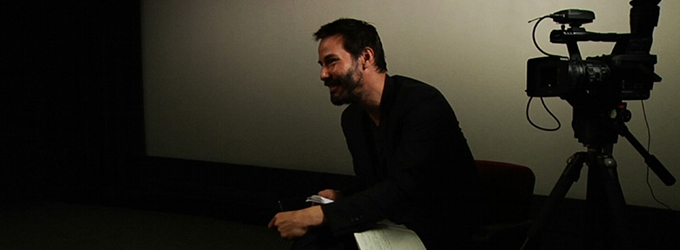
JR: You have views from both sides of the fence, but I was wondering what you thought was the balance of views within those opposed to digital film. Some simply prefer film aesthetically whereas others dislike how it affects their workflow, where did you feel the majority of the pushback comes from?
…initially there was a fear that the techonolgoy – the actual image quality – was inferior, which is the whole reason you’re using a certain camera […] but that’s arguable now.
CK: I think initially there was a fear that the technology – the actual image quality – was inferior, which is the whole reason you’re using a certain camera. They thought digital was inferior, but that’s arguable now. You find there are some things digital can do that film cannot, but film has this certain look – which you could recreate in digital but it will probably always look a little different. Also, the basic mechanics of film have been around for 100 years, so people had developed certain workflows which meant they truly were masters of the medium. To ask someone to switch after they have mastered something for decades can seem kind of crazy. Certain guys didn’t want to switch over as they really knew what they were doing and had a lot of success with it. I think there are less and less holdouts now, but there is still a case to be made for film.
JR: Given the technology has now advanced, do you think it is more the pace of that revolution that has unsettled people, rather than the actual aesthetics?
CK: That is part of the issue as well. Film is amazing in a way. We expect the technology we have in our laptops, phones, cars and so forth to be obsolete in a few years. So the idea that a technology could remain basically unchanged for nearly 100 years is kind of mind blowing right now. Even if you learn a new digital camera, it’s going change. When we started the movie in 2010, the ARRI ALEXA was just being introduced. Nobody had made a movie with it yet. Now it’s everywhere and I think there have been 4 or 5 versions of it with upgrades and everything. So things are moving fast, constantly changing and it’s hard to keep a grip on it. It’s part of the stress of the modern world, I suppose. Every week I feel there’s a new social media thing, you know? That in order to make your next movie you need to show that people follow you on twitter. I just want to write a movie! I don’t want to go make a social footprint or whatever it’s called. So I think that cycle of stress has become involved, for sure.
Film is amazing in a way. The idea that a technology could remain basically unchanged for nearly 100 years is kind of mind blowing right now.
JR: Another thing on the pace of this change: there is quite obviously still a case for film. A lot of people still prefer it and it certainly has its plus points, which people outline in the film, but do you think despite these pockets of resistance it may end up as a curiosity and fade away? When you have folk like Roger Deakins saying he can now do things with digital he can’t with film, and people waxing lyrical about his work on SKYFALL, is that when you need to pay attention to them – when they say they can do amazing things with this?
CK: It is, yes. That’s kind of the reason we decided to make the movie when we did. Digital cameras have been around for a while, which we show in the movie. Previously people did it because it was cheap, easy, for some sort of George Lucas special effects thing or a maverick trying to be edgy and artisitic. But when people like Deakins start choosing it for the way it looks over film – that’s where you have to say it’s here, it’s taking over and it’s only a matter of time before film goes away. Which is sad for a lot of people.
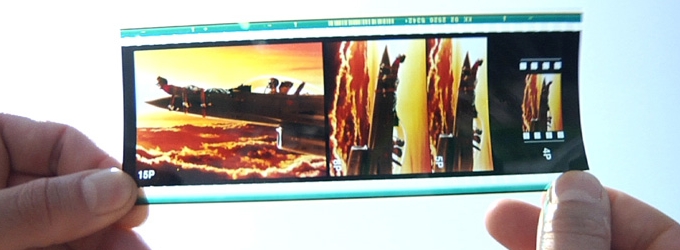
JR: In that respect, for those who are perhaps more nostalgic about photochemical film, is there perhaps a conflation between the format and the films made on it? To a certain extent, digital is still a new technology and films aren’t regarded as a ‘digital film’ in the same way LAWRENCE OF ARABIA or, recently, THE MASTER are with 70mm, for instance.
It’s hard to say what, but there is certainly something about film that, once you strip away all the science and other aspects, is slightly different.
CK: Yes, I think so. That is part of it, there is definitely a nostalgia. It’s hard to say what, but there is certainly something about film that, once you strip away all the science and other aspects, is slightly different. I’ll look at photos on my iPhone, and they look great and sharp, and then I’ll find an old photo. To really get the look I had on those? I’m not sure I could really manipulate the essence of it. It’s almost indescribable. You hear Christopher Nolan and other guys trying to put their finger on it, but it’s really difficult.
JR: The flip side is when the likes of Nolan are saying we must preserve the medium, they are also hard people to ignore.
CK: That’s the funny thing. When we made this doc, everyone we sat with was persuasive. If I had only that with Christopher Nolan then I would say, “Fine!”. He knows more than I do, he is a master filmmaker and he’s right. But then we would sit with Soderbergh and he would convince us of the opposite argument. Whoever we spoke to last was what was on our minds. We were going back and forth throughout, and we tried to keep our own opinions out when we had such great folk to talk to.
JR: Now that, budget issues aside, there is a choice between film and digital do you think that for the time being it will remain a mainly stylistic choice? In the same way there’s been a debate rumbling about 3D and higher frame rates, do you think it will become part of that stylistic landscape?
CK: I think for now it will be, but I really do think film is going to disappear or become very rare. There’s still guys like Nolan, Spielberg and that level of filmmaker who can choose what they want to shoot on, but for the rest of us the producer or studio, or whoever is putting the money in, will make that choice a lot of the time. I think there is a move towards a digital workflow, and that will be the way movies are made.
I think there is a move towards a digital workflow, and that will be the way movies are made.
JR: What are your opinions on the downstream effects of all this? There is quite a debate ging on about how this affects the actual screening of films. You have a lot of smaller theatres that can’t afford to install digital projection, it will maybe put a lot of financial pressure on them. Will this effect how films are shown and the likes of archive screenings?
CK: Well, the good thing about digital is that it makes distribution less expensive and easier theatrically. Places just play files. We just did a film festival in New York for boxing movies and we got a load of films and shorts in many different formats digitally. We put them on a drive and the projector could play any digital format right from the drive, we could play the film directly without making DCPs or anything and that’s pretty amazing. A lot of filmmakers would not have been able to afford to make those or HDCAM tapes or any of that, so that’s great. The downside is that the exhibitors need to buy a new projector, but there are things like Blu-Ray projectors. It depends on the size of the place and its needs, but it looks pretty good. Some people love the way film is projected, but just about all the DPs [Director of Photography] we spoke to preferred digital projection. By the time you’re showing a print that’s made from many different intermediaries, you’re not getting a high resolution or quality product a lot of the time. With digital you can kind of control that.
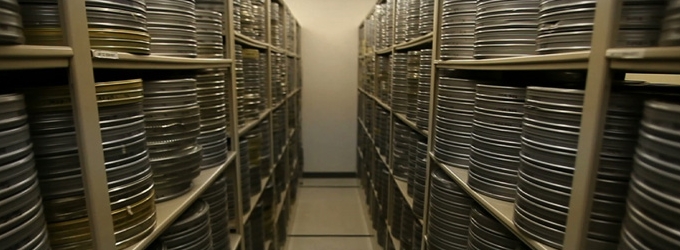
By the time you’re showing a print that’s made from many different intermediaries, you’re not getting a high resolution or quality product a lot of the time. With digital you can kind of control that.
JR: Well, Martin Scorsese points out in the film that in the case of film the final say over how it looks really lies with the projectionist.
CK: Well, yeah, but people can find ways to screw up digital projection as well!
JR: In terms of the access to films, when the democratisation of film was discussed there were a lot of filmmakers who didn’t feel that was a good thing, as this greater access resulted in more bad films. I think that’s a bit wide of the mark – you also get more good ones – but the archival aspects were interesting. Do you think you could have a situation where it would be a lot harder to do revivals of digital films in, say, 50 or 60 years from now?
CK: Yes, I think that is an issue. Even the other documentary we made, we shot it on MiniDV tapes, and I have those, but the camera we used as a deck, to go to the computer to edit, is dead. I have the tapes, and I’m sure I could track down a MiniDV deck somewhere in New York, but it would take some time and money. Those tapes are sitting there and I don’t what will happen to them. There’s about 100 hours of footage so I don’t want to digitise all of that and collate it. I guess that is what I’d have to do if I want to hang onto it. If you’re just a small independent filmmaker, you’re drawn to digital because of the cost and you can shoot tonnes of footage, but then you have tonnes of footage that is not archived. You don’t have the money to keep on top of it like a big studio would. It’s a conundrum, for sure.
JR: Do you think that could impact upon Director’s Cuts and such in the home video market – the sort of thing we see a lot, like the many different versions of BLADE RUNNER on DVD, because you may not have access to the additional footage and the whole process becomes more laborious?
CK: I don’t know, as when you’re editing now you are able to have so any different versions there is almost always more versions somewhere. Whether they get put out or not, it may be easy to do. But you’re reminding me of what is great about buying a DVD: all the behind the scenes footage and stuff they would use to entice you to buy the deluxe edition. You don’t see that as much when you choose to download something from iTunes. Maybe I haven’t investigated enough, but I love that kind of stuff.
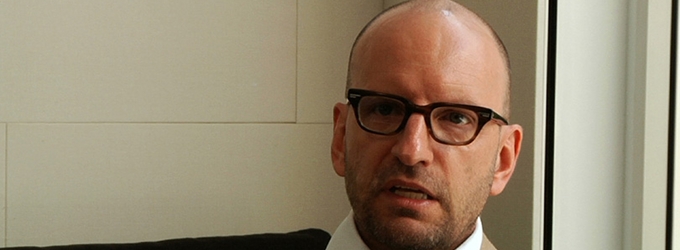
JR: I’m curious as to whether this will have an impact on where people watch films. When you have equipment replicating film quite well, for not necessarily massive cost – which will also come down quite a bit – do you think the capability of technology will impact upon that? When you have guerrilla filmmakers producing something that looks very polished and can just put it out on the internet, ultimately that may threaten the way the cinema business model works anyway?
CK: I think so, it’s already happening. TV and cable is really going to start to morph with what is available online, and it already is. It’s not just a monitor you watch it out of, it’s a semi-big screen at home which looks great and you can sit close on a comfortable couch. You can download things off cable or you can play DVDs or Blu-Rays and it looks great. You can watch on phones and iPads, and when you have them close to your face it’s maybe not that much different to sitting 40 feet back in a theatre with someone’s big head in the way. I don’t know how much this links to the technology, but there is something nice, to me, about going to a theatre with other people. You’re there at a specific time, and you’re stuck there for two hours giving your attention to just that movie. When you’re at home that’s not the case. The technology gives us new options, but I hope theatres still thrive and people go to them, and fortunately they seem to be right now.
…there is something nice, to me, about going to a theatre with other people. You’re there at a specific time, and you’re stuck there for two hours giving your attention to just that movie.
JR: A lot of folk admire the amount of craft that goes into making a film by the people who are on set, like the director, cinematographer and so forth. Do you think another reason people may lament the demise of film is, when you have such an extensive post-production process, they may feel less effort has been put in on set and it has shifted to mostly post-production? That it – even if I think this is incorrect – ‘cheapens’ the process slightly.
CK: Yeah, I can see what Keanu was driving at when he had this funny exchange with James Cameron on it. I can see why people might think that. However, from my own experience working on effects-driven movies, these people are working their asses off. They are working hard, perhaps in some cases because it is very technical. Even if you have a lot of green screen stuff it needs to be lit a certain way or it will look fake. I was very impressed with the integrity everyone we interviewed had and how much care went into all the projects, and the effort that this new technology replacing film was going to be as good or superior. No one was jumping on a bandwagon because it was easier. They wanted it to be better and to do new things with it. The same roles and key creative elements also translate into the digital world. You still need the lighting, lens-choosing and framing skills of a DP. Roger Deakins worked on RANGO, and he was choosing stuff as he would as a cinematographer even though it was animated. All those things – production design, costumes – are still needed to create a purely digital image.
JR: And it’s now getting a release in the UK?
CK: Yeah, we’ve had people messaging us asking when it would be available in the UK, saying they might have to get it somewhere else. I’ve been saying no, just wait!
SIDE BY SIDE will be released in the UK on February 15th. You can buy tickets for the screening at the Arts Picturehouse, with audience discussion after, here, which will be lead by Cambridge 105 and TAKE ONE.
You can read Jim Ross’s review of SIDE BY SIDE here from February 6th.
httpvh://www.youtube.com/watch?v=aFGJY_NJwwg

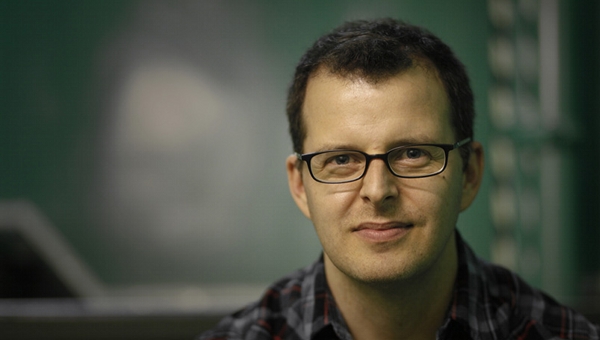
2 thoughts on “Side By Side: Chris Kenneally Interview”
Comments are closed.